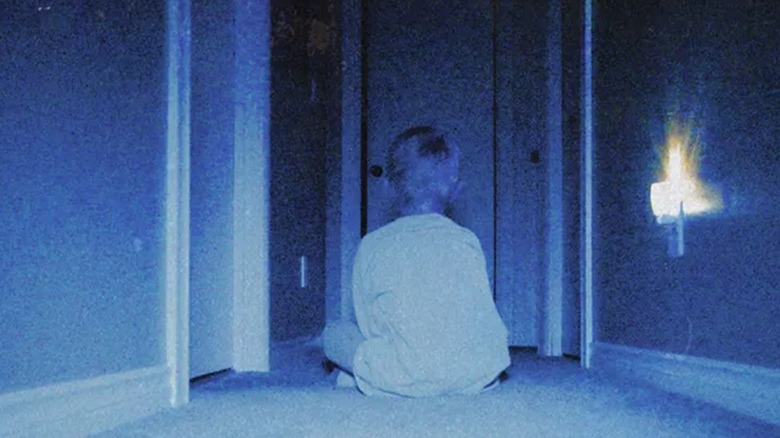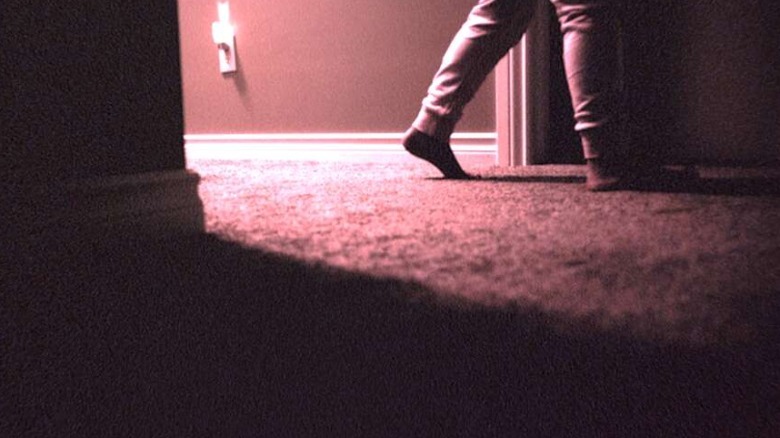How Skinamarink Director Kyle Edward Ball Used Sound To Tell The Story
Although the hype behind the new independent horror film "Skinamarink" emerged after it was pirated, its atmosphere is reminiscent of the childhood nightmares of bygone days. The director, Kyle Edward Ball, who got his start making short films for his YouTube channel Bitesized Nightmares, uses lo-fi cinematography in order to conjure haunted memories and primal fears stored in the deep recesses of the mind. Despite all of the visual techniques that "Skinamarink" is getting attention for, the film's sound design is just as important in creating its signature sense of a warped, corrupted anti-nostalgia.
A glance at the Bitesized Nightmares channel reveals Ball's experience in creating uncanny soundscapes that seem as if they've been recorded with a dying home video camera. The filmmaker has an entire section dedicated to old music and radio shows played back with a lo-fi sheen. As the name "Nostalgic Spooky Videos to Relax / Sleep" implies, the videos blur the line between comforting and unsettling.
There are also Ball's nightmare videos, inspired by posts from Reddit users, which heavily incorporate ominous sound design. As the stylistic basis for "Skinamarink," the shorts mix ambient noise and sound effects with complete silence, wickedly complimenting the dark, distorted visuals.
Hiss and hum
Ball not only wanted to authentically capture the visual aesthetic of an old, distorted home video recording but the audio playback, as well. In an interview with RogerEbert.com, Ball explained:
"I didn't just want to make the dialogue sound like it was recorded on an old microphone. I wanted the audio to feel like an old, scratched-up re-taping of a film that wasn't preserved from the '70s — lots of hiss, lots of hum. I had so much fun playing with that because I discovered in different scenes and different cuts I could use the hiss and hum to my advantage and tell a story even with that. [...] The whole movie, you have varying degrees of hiss and hum, and then there's a shot at the end where it's just gone; that takes you out of things and makes you think something's going to happen."
As a counter-example, Ball cited Ti West's "The House of the Devil," which he said sounded too clean to be a film from the '70s despite looking the part (and despite loving and admiring the film).
Watching and listening to old video footage has always been an effective way to up the creep factor in horror films. "Skinamarink" frames the entire film around the concept, as if the viewer shouldn't be seeing whatever cursed recording was discovered deep in the recesses of an old childhood bedroom.

